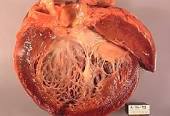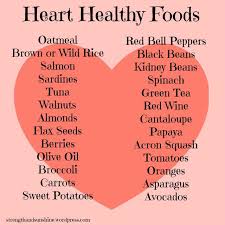
Diagnosed with Cancer? Your two greatest challenges are understanding cancer and understanding possible side effects from chemo and radiation. Knowledge is Power!
Learn about conventional, complementary, and integrative therapies.
Dealing with treatment side effects? Learn about evidence-based therapies to alleviate your symptoms.
Click the orange button to the right to learn more.
- You are here:
- Home »
- Blog »
- side effects ID and prevention »
- ASCT for Chemotherapy-induced Cardiomyopathy?
ASCT for Chemotherapy-induced Cardiomyopathy?

“A new stem cell therapy significantly improved long-term health outcomes in patients with severe and end-stage heart failure in a study presented at the ACC”
I am a long-term survivor of an incurable blood cancer called multiple myeloma. I underwent induction chemotherapy and an autologous stem cell transplant as therapy for this blood cancer in 1995. I developed chemotherapy-induced cardiomyopathy (CIC) from the cardiotoxic chemotherapy regimens from my induction chemo and ASCT in late 2010.
All of that is water under the bridge as far as I’m concerned. Of course because my CIC increases my risk of death dramatically I think my oncologist and the M.D. who managed the stem cell transplant program at University Hospitals of Cleveland should be held accountable for their actions. But there is little I can do about that at this point in time.
What I can focus on is keeping my heart as healthy as I can. According to the article linked and excerpted below, there are more than five million people in the U.S. who suffer from heart failure.
Though there are many different diagnoses for heart failure in general, the main issue is common for all of us. Our heart muscle slowly weaken and stop working…and we die.
As I understand it, once the heart is end-stage, the only option left is for the patient to get a new heart aka have a heart transplant. The therapy discussed in the article below offers the possibility of a different solution.
It would be the definition of irony if stem cells cured the chemotherapy-induced cardiomyopathy (heart failure) caused by my first autologous stem cell transplant. But the curative aspect of stem cells to repair hear failure is a way’s off, I think.
Have you been diagnosed with chemotherapy-induced cardiomyopathy? To learn more about evidence-based, heart health therapies, scroll down the page, post a question or comment and I will reply to you ASAP.
Thank you,
David Emerson
- Cancer Survivor-
- Cancer Coach
- Director PeopleBeatingCancer
Recommended Reading:
- Secondary Cancer Post Autologous Stem Cell Transplant for Myeloma
- Heart Failure Rehab w/ Lifestyle Therapies
- Got Heart Failure? Get Brain Training, Exercise, Supplements, Diet
Stem Cell Therapy Improves Outcomes in Severe Heart Failure
“A new stem cell therapy significantly improved long-term health outcomes in patients with severe and end-stage heart failure (CIC) in a study presented at the American College of Cardiology’s 65th Annual Scientific Session…
Among 109 patients randomized to receive the cell therapy or a placebo, those receiving the cell therapy, which involved extracting stem cells from a patient’s own bone marrow, showed a 37 percent lower rate of the trial’s primary endpoint, a composite of deaths, cardiovascular hospitalizations and clinic visits for sudden worsening of heart failure symptoms, over a 12-month period…
Heart failure, (and CIC) which affects an estimated 5.1 million people in the United States, is a condition in which the heart progressively weakens and cannot pump enough blood to meet the body’s needs. Those with severe and end-stage heart failure—known as class III and IV heart failure on a scale developed by the New York Heart Association—often have no treatment options apart from a heart transplant or a left ventricular assist device, a heart pumping machine given to patients as a temporary measure while they await a heart transplant…
Among patients given stem cell therapy, 3.4 percent died and 37.9 percent were hospitalized with cardiovascular problems, as compared to 13.7 percent and 49.0 percent, respectively, in the placebo group.
Patients given stem cell therapy also had, on average, a longer amount of time until their first adverse event. Other measures of heart function and quality of life, including a walking endurance test and a measurement of the amount of blood pumped out of the left ventricle with each contraction, also suggested improvements in the group receiving ixmyelocel-T…”


